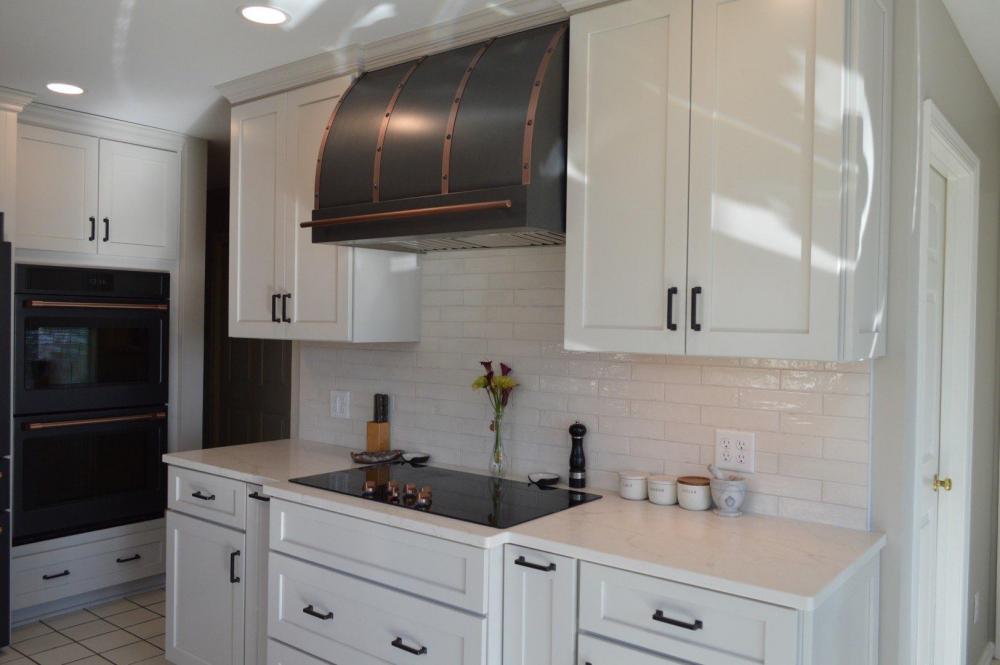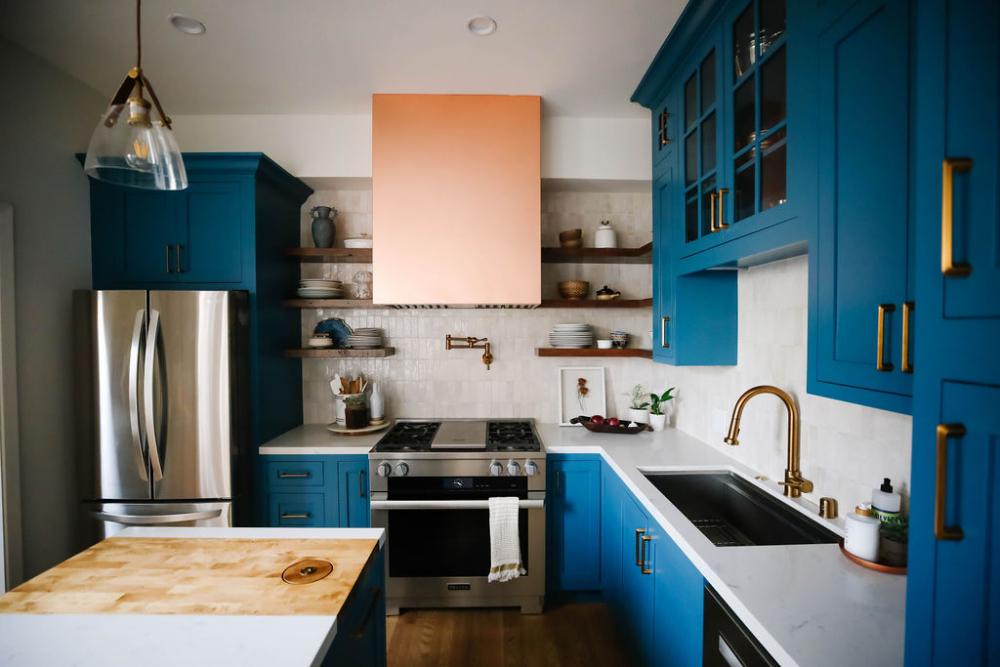Copper has been a popular choice for home design and construction for centuries, and for good reason. Its unique properties and aesthetic appeal make it a versatile and attractive material for various applications.
In this article, we will delve into the various properties of copper, compare it to other common metals used in home design, and explore the benefits and popular applications of copper in home design projects.

Understanding the Properties of Copper
The unique properties of copper set it apart from other common metals like aluminum, stainless steel, brass, and bronze. Let's take a closer look at these properties and how they contribute to making copper a superior choice for home design applications.
-
Conductivity and Heat Resistance
Copper is an excellent conductor of heat and electricity. This property makes it ideal for use in plumbing systems, providing consistent water temperature and reducing the risk of damage in extreme climates. Its thermal conductivity also plays a role in its use for radiant heating systems.
In addition to its conductivity qualities, copper's heat resistance allows it to maintain its structural properties at a wide range of temperatures, making it suitable for various environments.
For example, when copper is used in radiant heating systems, it can help to distribute heat evenly throughout a room. This is because copper's high thermal conductivity allows it to transfer heat quickly and efficiently. This means that homes with copper heating systems can enjoy more consistent temperatures and lower energy bills.
-
Antimicrobial Qualities
One of the lesser-known but highly beneficial properties of copper is its antimicrobial nature. Copper surfaces have been shown to inhibit the growth of certain bacteria, fungi, and viruses, making it the perfect choice for creating hygienic spaces. This property can be particularly useful in kitchens and bathrooms, where germ transmission can be minimized by using copper fixtures and fittings.
In addition to its antimicrobial properties, copper is also a natural fungicide. This means that it can help to prevent the growth of mold and mildew in damp environments. For this reason, copper is often used in humid climates to help prevent the spread of harmful bacteria and fungi.
-
Malleability and Ductility
Copper is a malleable and ductile metal, making it easy to shape into custom designs without cracking or breaking. This property allows for unique and intricate designs that would be difficult to achieve with other materials. Additionally, ductility enables copper to be drawn into thin wires, which can be helpful for concealing electrical components in home design projects.
For example, copper can be used to create beautiful and intricate light fixtures that add a touch of elegance to any room. Its malleability also makes it a popular choice for creating ornate copper sculptures and decorative accents.
In conclusion, the properties of copper make it a versatile and valuable material for home design applications. From its conductivity and heat resistance to its antimicrobial qualities and malleability, copper is a superior choice for creating beautiful and functional living spaces.
Comparing Copper to Other Common Metals
While copper exhibits numerous desirable properties, it's essential to consider how it compares to other common metals used in home design to understand its superiority truly. Copper has been used for centuries in various applications, including electrical wiring, plumbing systems, and decorative elements.
-
Copper vs. Aluminum
Though aluminum is lightweight and affordable, it lacks the thermal and electrical conductivity of copper. Additionally, aluminum is more prone to corrosion and tends to exhibit a duller appearance over time. Copper, on the other hand, develops a natural patina that protects the metal and adds a unique aesthetic character. Copper is also more durable than aluminum, making it a better choice for applications that require strength and longevity.
Another advantage of copper over aluminum is its antimicrobial properties. Copper has been shown to kill bacteria and viruses, making it an excellent choice for surfaces that need to be kept clean and hygienic. In contrast, aluminum does not have the same antimicrobial benefits as copper.
-
Copper vs. Stainless Steel
Stainless steel is known for its corrosion resistance and strength, but it falls short in conductivity, malleability, and aesthetic appeal when compared to copper. Stainless steel also shows fingerprints and smudge marks more easily than copper, requiring regular cleaning and maintenance. In contrast, copper develops a unique patina over time that enhances its appearance and protects the metal from corrosion.
Copper is also more malleable than stainless steel, making it easier to shape and form into intricate designs. This property makes copper an ideal choice for decorative elements such as light fixtures, doorknobs, and cabinet hardware.
-
Copper vs. Brass
Brass, an alloy of copper and zinc, shares many of copper's properties, such as malleability and antimicrobial qualities. However, brass requires regular polishing to maintain its appearance, while copper develops a low-maintenance patina over time. Copper is also more conductive than brass, making it a better choice for electrical wiring and other applications that require high conductivity.
Another advantage of copper over brass is its durability. Copper is more resistant to corrosion and wear than brass, making it a better choice for applications that require strength and longevity.
-
Copper vs. Bronze
Bronze, an alloy of copper and tin, is known for its durability and corrosion resistance. However, bronze is heavier and less conductive than copper, making it less suitable for applications such as plumbing systems and wiring.
Bronze is also more expensive than copper, making it less cost-effective for many applications. Despite these differences, bronze has a unique aesthetic appeal that sets it apart from copper.
Bronze has a warm, golden-brown color that develops a patina over time, giving it a unique and timeless appearance.
Bronze is often used for decorative elements such as statues, sculptures, and architectural details.
In conclusion, while copper shares many properties with other common metals such as aluminum, stainless steel, brass, and bronze, it stands out for its unique combination of conductivity, malleability, durability, and aesthetic appeal.
Copper is a versatile metal that can be used in a wide range of applications, from electrical wiring and plumbing systems to decorative elements and jewelry.
Benefits of Copper in Home Design
Now that we have a better understanding of copper's properties and comparisons with other metals, let's look at the benefits of using copper in home design.
-
Aesthetic Appeal
Copper boasts a warm, reddish-brown hue that adds a unique touch of elegance and sophistication to any home design. Over time, copper develops a patina, deepening its natural color and providing a distinct character to the material that cannot be replicated by other metals. This time-honored aesthetic makes it an excellent choice for those who appreciate the charm and history that copper brings to home design.
-
Durability and Longevity
Copper is exceptionally durable and resistant to corrosion, ensuring a long-lasting investment for your home design project. Its natural patina protects the material, while its structural integrity remains uncompromised in various climates and conditions. Whether used in roofing, plumbing, or decorative elements, copper is a robust material that stands the test of time.
-
Low Maintenance Requirements
One of the most appealing aspects of copper is its low maintenance requirements. Copper's natural patina protects it from the elements and prevents corrosion, reducing the need for frequent cleaning or polishing. As long as it's installed correctly, copper can endure for decades with minimal care, making it an ideal choice for busy homeowners or those who prefer a low-maintenance lifestyle.
-
Eco-Friendly and Recyclable
Copper is a sustainable material with a significantly lower environmental impact compared to other metals. It is both eco-friendly and recyclable, with a high recycling rate and a long service life. Using copper in home design applications contributes to reducing waste and conserving natural resources, making it a desirable choice for those committed to sustainable living.
Popular Copper Applications in Home Design

There are countless ways to incorporate copper into your home design projects. Here, we will explore a few of the most popular applications.
-
Copper Plumbing Systems
Copper has been the go-to choice for plumbing systems for decades. Its conductivity, antimicrobial properties, and durability make it ideal for delivering clean water and maintaining stable water temperatures. Copper piping is resistant to water damage and corrosion, ensuring a reliable and long-lasting plumbing system.
-
Copper Roofing and Gutters
Copper roofing materials and gutters are stunning and functional additions to any home. They offer excellent durability and longevity, easily lasting for over a century when properly maintained. The striking appearance of copper roofs and gutters will not only enhance your home's curb appeal but also add value to your property.
-
Copper Kitchen and Bathroom Fixtures
Incorporating copper fixtures like faucets, sinks, and showerheads in your kitchen and bathroom can dramatically elevate the aesthetic appeal of your spaces while providing antimicrobial benefits. In addition to their striking appearance, copper fixtures are also easy to clean and require minimal maintenance, making them ideal for busy homeowners.
-
Copper Accents and Decorative Elements
Copper accents such as light fixtures, cabinet hardware, and decorative items can add a warm, inviting touch to your home design. These elements allow you to incorporate the beauty of copper into your space without committing to a significant renovation or investment.
In conclusion, copper's unique properties, aesthetic appeal, and versatility make it an exceptional choice for home design. With virtually endless applications and benefits, it's no wonder that copper has been a popular material in home construction for centuries for products like range hoods, sinks, tables and bathtubs. Embrace the beauty of copper in your next home design project and experience the difference for yourself on your next vent hood!

